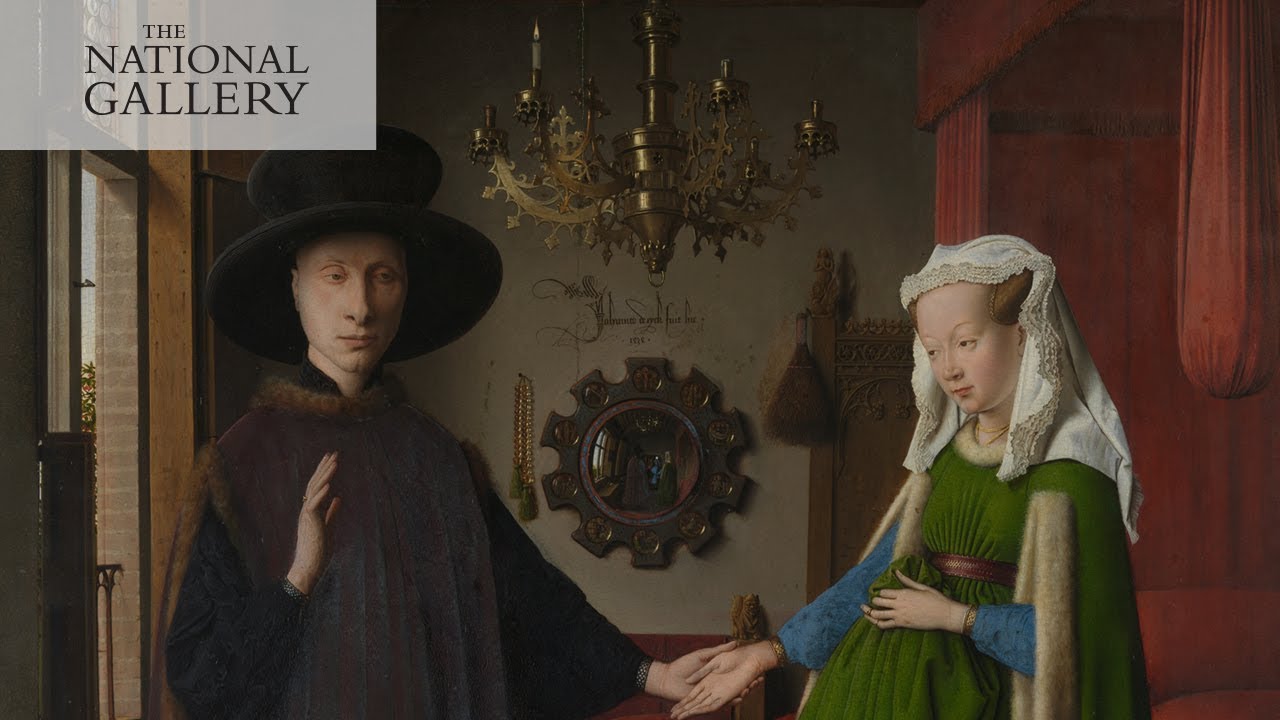
Robert Draws – The Arnolfini Portrait, painted by Jan van Eyck in 1434, offers a fascinating glimpse into 15th-century Flanders. This masterpiece is not just a simple wedding portrait, but a detailed depiction of the period’s fashion, social norms, and artistic techniques. The painting, also known as The Arnolfini Marriage, shows Giovanni di Nicolao di Arnolfini and his wife, Costanza, in their home. With its intricate details and symbolism, the artwork captures the essence of Renaissance life, revealing much about the time it was created.
The Arnolfini Portrait features Giovanni di Arnolfini, a wealthy merchant, and his wife. The couple is shown standing in the interior of a lavishly furnished room. Giovanni, dressed in a dark fur-lined robe, stands with his hand raised, possibly in a gesture of swearing an oath or a vow. His wife, Costanza, is dressed in a bright green gown with a long train, a fashionable style at the time. Both figures are meticulously painted, capturing the texture of their clothing and the luxurious fabrics.
The background of the painting includes a mirror reflecting two figures, believed to be the artist and a witness, possibly recording the event. The rich furnishings in the room, such as the carpet, the chandelier, and the brass candelabra, indicate the wealth of the couple. The marriage, or perhaps a betrothal, is hinted at through their hand placement, with the wife’s right hand placed in Giovanni’s left. However, the scene is enigmatic, with much of its meaning and context still open to interpretation.
Jan van Eyck was known for incorporating symbolic elements into his works. In The Arnolfini Portrait, numerous details carry hidden meanings. The convex mirror, for instance, reflects not only the couple but also two additional figures, adding a sense of mystery and depth. This reflection could symbolize the presence of God, the ultimate witness to the marriage.
The inclusion of a dog at the couple’s feet is another symbolic element. Dogs were symbols of fidelity, loyalty, and marriage in the 15th century. Their presence emphasizes the theme of commitment, reflecting the traditional values of the time. Additionally, the luxurious carpet and the chandelier could suggest the wealth and status of the couple, showcasing their prosperity.
The lush flowers in the foreground, particularly the single white flower in a vase on the windowsill, are thought to symbolize purity. White flowers were frequently used to represent chastity and virginity, reinforcing the sanctity of the marriage.
Jan van Eyck’s talent as an artist is evident in the level of detail and precision in the painting. His use of oil paints allowed him to create rich, vibrant colors and fine textures. The reflections in the convex mirror, for instance, display van Eyck’s meticulous attention to light and detail. His technique of layering oil paints resulted in smooth transitions between light and shadow, which added a realistic quality to the work.
Van Eyck’s skill is also visible in the texture of the clothing and the surfaces of objects. The way he captured the soft folds of the fabrics, the sheen of the metal candelabra, and the transparency of the glass in the mirror displays a mastery of his medium. This level of detail was groundbreaking at the time and influenced future generations of artists.
The Arnolfini Portrait is more than just an artistic achievement. It offers a window into 15th-century Flanders’ social and economic life. The painting focuses on the couple’s attire and luxurious furnishings. This reflects the rising merchant class in Bruges, where van Eyck worked. Flanders was a cultural and economic hub during the Renaissance. Trade flourished, and wealth grew among the merchant elite.
The portrait highlights a private moment in the couple’s life. It suggests the growing importance of individual identity. During this time, portraiture became vital for wealthy individuals. They used it to commemorate important events, such as marriages. It also helped display their social status. This focus on the individual would become more prominent in Renaissance art. Artists began exploring personal experiences and emotions.
“Read more: UNODC’s Impact on Human Trafficking: Key Reports and Data Insights”
While The Arnolfini Portrait is often interpreted as a wedding or betrothal portrait, the exact meaning of the scene remains uncertain. The gesture of Giovanni raising his hand could indicate a solemn vow, but it’s unclear whether the couple is already married or engaged. Some scholars even suggest that the painting may be a record of a legal transaction or a commemoration of a specific event. The lack of clear documentation about the couple’s identity adds to the mystery surrounding the painting.
Despite these uncertainties, the painting remains one of the most studied and admired works of the Northern Renaissance. The combination of its technical skill, rich symbolism, and enigmatic subject matter continues to captivate viewers and art historians alike.